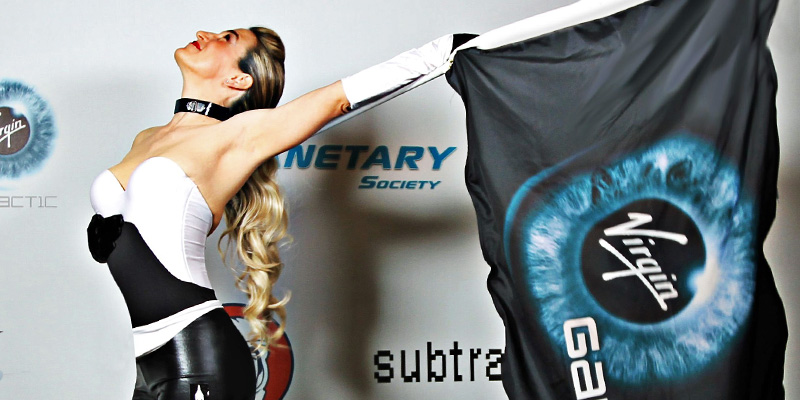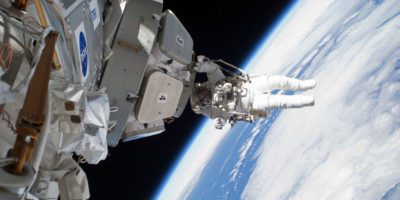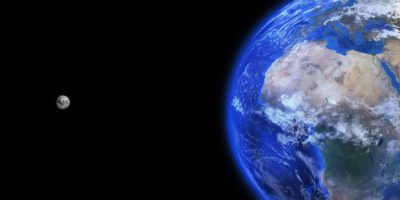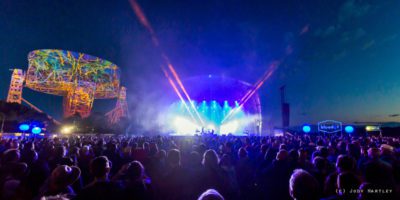Loretta Hidalgo Whitesides is a Founder Astronaut and consultant at Virgin Galactic, alongside being a lecturer at the International Space University and a well-known public speaker. She is co-creator of Yuri’s Night, an annual worldwide party to celebrate Yuri Gagarin’s first flight into space, as well as to promote space exploration. Loretta is trained as an astrobiologist and she loves connecting people, translating between scientists, engineers and non-technical people.
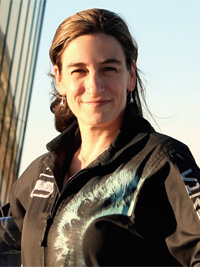
“…We have seven pilots at Virgin Galactic, and one of them happens to be a woman, so I strive to ensure all our press releases refer to ‘human spaceflight’. Every other profession has gender neutral descriptors, space flight should too…”
The space ship under the stairs
I wanted to go into space ever since I was about six years old. My cousins and I used to play astronauts, under the stairs at their house. They had a crawl space under the stairs with insulation and silver ducting – that was our space ship!
I remember we had a National Geographic book at my cousin’s house called Our Universe. The book was incredibly imaginative. They had a brilliant section on hypothetical life forms that could exist on all the planets in the solar system, and even some of the moons like Europa. The creatures were brilliant. The one of Mars was like an ostrich with huge ears to illustrate to the reader how cold and thin the atmosphere is there, so the creature would need these big ears, which it would wrap around itself at night.
It was such a brilliant way to teach kids about the planets and to capture our imaginations. We understood they weren’t real. Kids are smart so weren’t confused. We also went to Kennedy Space Center when I was a kid. I don’t remember it but I have pictures of me in a space suit. I’ve known I wanted to go into space ever since.
Space pilgrimage
I studied astrobiology at Stamford and Caltech (California Institute of Technology). I was interested in the biology of life support – how would we grow food away from Earth? For example, on a settlement on the moon, or on Mars or in space? How could we use those plants to recycle all our air and water in the same way Earth does so that we’re totally self-contained and we don’t have to get re-supplied?
After Stanford, I went to Johnson Space Center, where I did an unpaid internship in the astronaut office. It was more like a pilgrimage to me and Houston was my Mecca. I wanted to know if the astronauts were still passionate and touched by this experience, or if they had become jaded over time. I wanted to see what they were like for myself. It was an incredible experience. I found some extraordinary astronauts and I ended up being mentored by some of them, so it became a fundamental part of my development. It was an extraordinary opportunity for me, having just come straight out of college.
Mars, well almost…
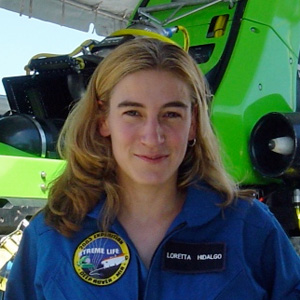
After that I went to work at NASA’s Ames Research Center in California. I’m a Californian and I had been in Texas (which was like being abroad for a Californian) so I needed to get home. I worked at NASA Ames in their academy, where I was basically a counsellor for the interns working there that summer. I loved it because I’m in my element when I’m working with people who are working in space, so it was a perfect fit for me. I went on to work for Dr. Chris McKay, who’s research focuses on Mars and terraforming. To begin with, he’s an astrogeophysicist, which is such a cool title and he was a great mentor.
After the year I spent working with him, Chris sent me up to the Canadian Arctic with Pascal Lee to research plant life – they were doing Mars analogue research up there where a crater had impacted some 20 million or so years ago. I spent two weeks with them up near the North Pole, where there was 24 hours of sunlight and I got to do traverses in ATVs (4×4 vehicles) – it was like being on Mars!
Inspiring the world through Yuri’s Night
I went to graduate school after that at Caltech. I wanted to be like Chris so I decided I was going to get my Ph.D. and become a researcher. Around that time, I also started Yuri’s Night with my now husband, George (although were just colleagues at the time). The first Yuri’s Night was on 12th April 2001, the anniversary of the first person in to reach space (Yuri Gagarin) and the first shuttle launch, so a Russian anniversary as well as a US anniversary.
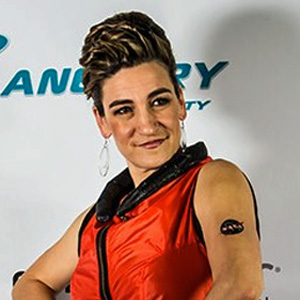
Blazing my own trail
I dropped out of graduate school after about two and a half years. I realised that I had to be true to myself and my calling to be a communicator and a space visionary. Being a research scientist wasn’t going to be the best way for me to contribute to the vision I had for our future in space. It was a tough moment for me – I wasn’t sure what I’d do if I got off the academic track, so it was a very interesting time in my life and a period of growth. I eventually realised I had to own who I was and what made me unique in the world, and to be that.
In 2004 I worked at X PRIZE Foundation doing XPRIZE launches and helping them promote those to the world. I had a lot of fun managing a team there. I then moved to Washington DC to follow George, who’d got a job out there running the National Space Society. I got a job at NASA working in their Mars Exploration division doing communication, education and outreach, which was also a lot of fun. However, I was fired from that job, which was also a great learning experience. It was the universe saying: “You can’t hide in a comfortable, safe thing. You have to go out and blaze your own trail.”
So, I recovered and I got into journalism. I was blogging for Wired Science for a while and did some other things – touring around colleges and leading workshops on launching your career in space, building on the theme of my career. Helping to inspire and train the next generation of space leaders is something I’m incredibly passionate about.
Taking my “reproductive sabbatical”
George was then appointed as chief of staff at NASA and was headhunted a few years later by Richard Branson to become the CEO of Virgin Galactic, so we moved from Washington DC back to California with our three-month-old son. The next five years was mostly what I call my “reproductive sabbatical”.
I had two children, which nearly killed me (not literally) because I’m not a natural at taking care of small kids. It was definitely a challenge and a lot of work. It was a great opportunity though. I’m a huge Star Wars fan and I call my son “my Jedi trainer” because he’s teaching me how to be more patient! (If I want to be a good Jedi, I need to learn patience…) I spent most of the next five years at home with the kids. I did a few projects like Yuri’s Night and working on Virgin Oceanic, but I was mostly at home.
I was also working on my book. I turned 40 during that time and I was determined I had to write it! It’s still not out yet but it’s mostly done. It’s called The New Right Stuff – Vulnerability and Authenticity on the Final Frontier. It’s a training manual for the next generation of space leaders in how to use their passion for space as Jedi and as leaders of our community.
I tell them that we need to hold ourselves to a higher standard than the rest of the world, because what we’re doing is so ground-breaking and we’re going to set so many precedents. Who we’re being when we’re building this rocket is going to influence how we impact on the world, so we have to do it respectfully, graciously, calmly, reverently, lovingly, so we have to train our community in those skill sets too.
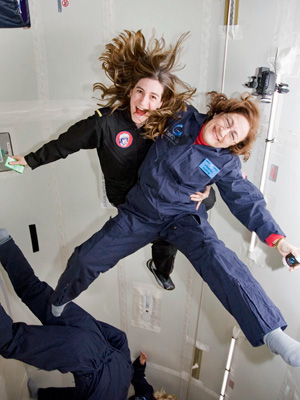
Becoming part of Virgin Galactic, heart and soul
Joining Virgin Galactic has been a great ride. I was at the XPRIZE flights in 2004 where Virgin Galactic was announced, and Richard Branson was there. It was cool to be there at its birth. At New Years, we were in the UK and my husband set up a meeting for himself with Virgin Galactic in London. Our space friends were all gathered in London too and we were all jealous of him – “How come we didn’t think to set up a meeting with Virgin Galactic when we were in London? You’re so smart!”
So, we were all hanging out at an Internet café (back when those were a thing). My husband came back from the meeting and I was still jealous of him. At this point he confessed that the meeting had actually been about him talking to them about buying tickets for me and him to fly on a suborbital space flight. I soon managed to get over being mad at him for not taking me to the meeting when he explained his secret motive of surprising me!
It took us a couple of months of working on the contract, but he presented me with the tickets for our space flight on my birthday – 12th April – in 2005, so we’ve now been customers for 12 years.
We’d worked in the space industry in the US for our whole careers so we were a useful resource for Virgin Galactic and they eventually brought George in as a consultant. When they eventually began gearing up to start operations on the United States in Mojave and they asked him if he would be willing to join, which upped our involvement from customers to shaping the company. We moved from Washington DC back to California and got started. I was issued with my badge and my email address and I began working there as well two years ago.
We’ve just announced Virgin Orbit as a separate entity a few weeks ago, although they’ve been working in a Long Beach facility for about two years now. They’re focused on launching satellites into orbit. So, in Mojave we’ve got the suborbital spaceship that’s launching people and in Long Beach we have the orbital rocket that’s launching satellites.
We have about 800 people across two teams that we take care of. I like to say that I’m the self-appointed guardian of the heart and soul of the company!
Yuri goes global
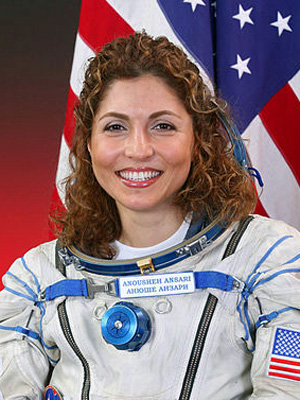
This year’s Yuri’s Night went fantastically for us. The LA event grew a lot. We had Rusty Schweickart, an Apollo 9 astronaut, and Anousheh Ansari, a spaceflight participant. 1,200 people attended. There were DJs as well as food and drink, alongside other activities – art, costumes and all things space. There was a delightful vibe. I’m very proud of what we created. People were coming up to us all night saying: “It’s amazing. Thank you for doing this. We’ve really enjoyed being here!” It meant so much after all our hard work over the years.
Globally, we were very excited to have a number of events this year, including for the first time ever the Smithsonian National Air and Space Museum in Washington DC – the holy grail of space museums. We’ve been wanting to do a Yuri’s Night event there forever and this was the year it finally happened. What made it even better was that it was their idea to get involved. “Would it be OK if we threw a Yuri’s Night party here?” We naturally said “absolutely!” and it was a lot of fun.
We had 200 events all over the world. The reality is that we don’t coordinate it all. It’s completely open-sourced. We decided right from the start that the essence of Yuri’s Night was that we were going to give it away. We would say: “Here’s the idea. Here’s our logo. Go run with it. Go and create something extraordinary.” It’s a real do-it-yourself movement where people can take this on and make of it what they will.
We’ve had everything from a burlesque show, to a traditional tea ceremony in Japan, to a wedding in an observatory in South Africa. The wedding was very cool. They had a cake in the shape of a space shuttle with three sparklers on the back for the engines. It’s like St. Patrick’s Day. If we could have every bar in the world doing it that would be great!
Bridging the STEM communication gap
I call myself a translator in STEM – a bit like C3PO. (I wish I was also fluent in over 6 billion forms of communication like him – I’m not quite there yet but I’m working on it…) Communication is critically important. If you think about Buckminster Fuller’s idea that we’ve become too siloed and to solve the problems of today we have to integrate all of our thinking, we have to be able to reach across cultures and also across disciplines.
Reaching across science and religion is one of the gaps I’m passionate about bridging. If we can’t talk to each other, we can’t understand each other and we can’t respect each other then we can’t come together to solve the world’s problems. So, translators like me – just like the literal translators at the UN – are critical to bridging gaps.
I saw an incredible presentation at the conference I was at yesterday. The woman was explaining pregnancy to male politicians in a light-hearted way. Now pregnancy is obviously a very scientific concept, but she used analogy, which is a very powerful tool. She made an analogy about football, which helped to put it into terms that the audience could understand. It’s about knowing your audience well enough to be able to do this successfully.
An enchanted bubble where women thrive
One of the things I’ve marvelled at lately is how many extraordinary pro-women bosses I’ve had throughout my career. I’ve heard so many horror stories from colleagues about people saying: “Women shouldn’t be here. Women don’t belong here.” There’s so much discouraging commentary out there, which is why I feel I’ve been so blessed. I’ve had mostly (but not exclusively) female bosses, mentors and my Ph.D. supervisor was a woman too, so they must have been giving me great advice the whole time.
I was lucky, I lived in this environment where it was normal for women to thrive. I grew up in a female dominated family. I went to an all-girls school and the teachers were always reminding us that women could do anything. I went to an all-girls camp where we were empowered that we could do anything so I never needed advice because it never occurred to me that there was anything holding me back.
There wasn’t anything that I had to defend against so I suppose I lived in an enchanted bubble for most of my career, which allowed me to thrive and do well. This is a great lesson to all of us that we need to create that environment for the women coming up now and they will just thrive.
It’s not what you say, it’s how you say it
One of the things I work on is changing the language. There’s a huge push to do this in the US. We don’t say ‘mail man’, we say ‘mail carrier’. We don’t say ‘policeman’, we say ‘police officer’. We don’t’ say ‘congressman’, we say ‘member of congress’. We’ve gone to great lengths with US English to make things gender neutral, and yet in my industry it’s incredibly common still to hear people calling it ‘manned space flight’, and it makes me sad.
What’s worse is that it isn’t just people who haven’t thought about it, or those who are uninformed, or come from a different era – it can even be the associated press. It’s still approved language in their handbook, and as long as anyone is still using that we’ve still got a long way to go… I try to push back on the language. We have seven pilots at Virgin Galactic, and one of them happens to be a woman, so I strive to ensure all our press releases refer to ‘human spaceflight’. Every other profession has gender neutral descriptors, space flight should too.
Levelling the playing field
One of our managers in particular is extraordinary – he employs the most female engineers of anyone in the company, so I asked him: “What are you doing differently? What are you doing right because you are very successful in supporting and mentoring these incredible women? What’s your secret?” He was quiet for a moment and then he said, “I think about it.”
The fact that it’s on his radar makes the difference and because it’s something he cares about, it’s enough to tip the scales. I thought that was incredibly profound, because even if we could just get more people to think about the issue more things would change.

One of the things that’s been said is that we need to have men taking off the same amount of time as women when a baby is born so women aren’t penalised in the workplace. When you’re hiring and you’re thinking: “She might become a parent and take six months off,” but then you also have to think: “He might become a parent and take six months off,” it’s a level playing field.
Please don’t go…
What I want people to think about is that when a woman goes off on maternity leave, she basically got a competing job offer, so you have to relate to it that way and try to respond in the same way as if some other company was trying to steal her away. You have to offer her a raise, a promotion or better working conditions. The reason women leave the workplace at that time is because they get a better offer.
We’re still operating in a ‘Dilbert’ culture, and we’re not respecting people, we’re not listening to people, we’re not empowering people. When they don’t feel heard, they don’t feel like what they’re doing is making a difference and they don’t feel like they’re contributing to something bigger than themselves, then of course they’re going to leave when they get a better offer. Anyone would. Men just don’t usually have option of leaving when they become parents, whereas some (but by no means all) women have the privilege of deciding whether or not we want to stay in the workforce.
If work isn’t providing an environment that supports us, empowers us and allows us to contribute to something greater than ourselves, then we’ll go somewhere that does. If that means being home with the kids we’ll do that. So, I think the way to keep women in industry, whether it’s space or any technical field, or the lab or the university, is to create an environment that’s compelling and supportive enough that they wouldn’t dream of leaving.
If it’s their dream job and they’ve wanted to work at NASA their whole life, or they’ve wanted to be a professor, as long as we don’t screw it up and make it a horrible place where they’re getting hit on and they’re not getting tenure because someone’s being a jerk, or no-one’s respecting their needs or appreciating their comments in journal club, they’ll stay. And that’s on us.
I’m lucky I could take five years off. It was hard to be on the sidelines but it’s OK as long as we don’t stigmatise it. “Oh, you have a Ph.D. in physics. OK… But you took a five year sabbatical..?” If a woman chooses to take time off after the baby is born when she comes back she still has a Ph.D. in physics! She might need to update her knowledge, but she could be a great mentor, she could be a great teacher, or she could do a returnship to help her get back up the speed and back in the game.
Supporting women (and men) in whatever they’re choosing is fantastic. (Why shouldn’t men be able to take five years off and then do a returnship too?)
On the horizon
I’m looking forward to getting out in the world as a speaker. One of the things I feel I was put on Earth to do is to help people fulfil their missions about what they came to Earth to do. I love to get out on the road and empower people. I love to give them ideas and to get them thinking about what their role is. If everyone was doing their thing, we could take care of the whole planet.
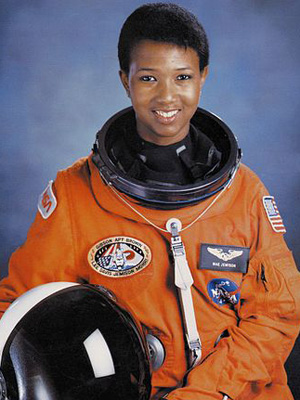
There is a total eclipse happening in the US on August 21st that I’d like to encourage people to watch. Also, 12th September is the 25th anniversary of Mae Jemison’s space shuttle flight. She was the first woman of colour to fly in space. She’s incredible – she’s also a medical doctor, a dancer and a visionary. Until now the only time all the female astronauts have got together was when Sally Ride passed away, so I thought it would be wonderful to get everyone together to celebrate something instead of to mark someone’s passing. So, I’m looking to do some women in space events and create an event around that, which will be fun.
Virgin Galactic’s probably going to start our power test flights this summer where we actually light the rocket engine, start breaking the speed of sound and getting ready to head up into space. In less than two years I’ll have the opportunity to do my space flight as one of the founder astronauts, so I’ll be one of the first 60 people who get to fly into space once we start our commercial flights. It’s going to be big…!
https://twitter.com/lorettahidalgo
https://twitter.com/yurisnight
https://www.facebook.com/yurisnight
Coming Soon: http://www.lorettawhitesides.com/
Anousheh Ansari image credit: By NASA [Public domain], via Wikimedia Commons
Dr. Mae Jemison image credit: By NASA (Great Images in NASA Description) [Public domain], via Wikimedia Commons

